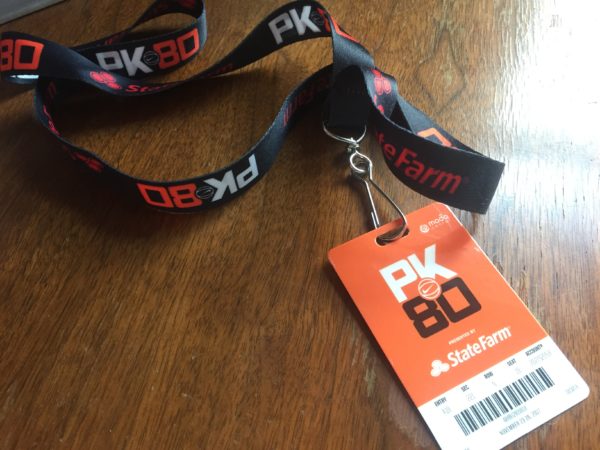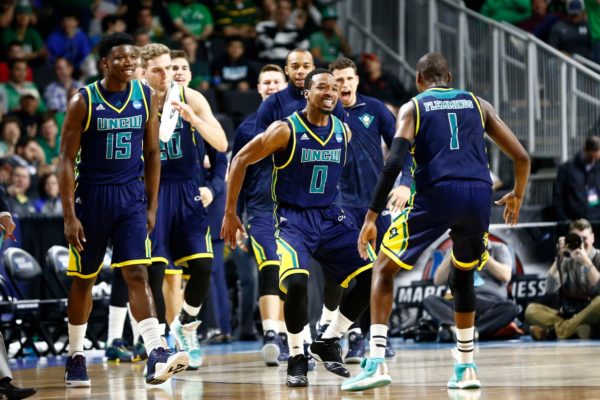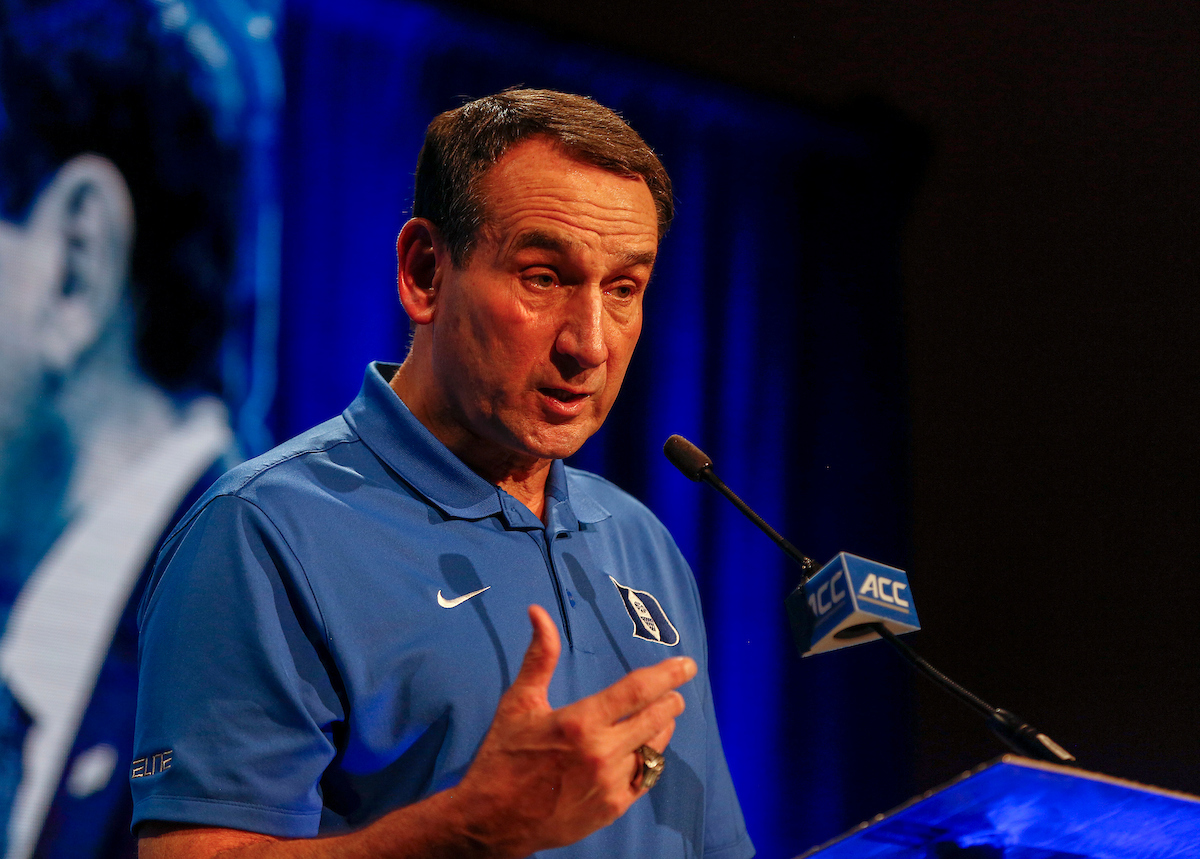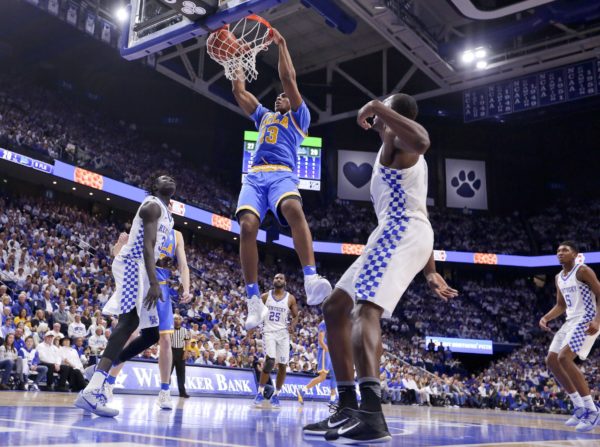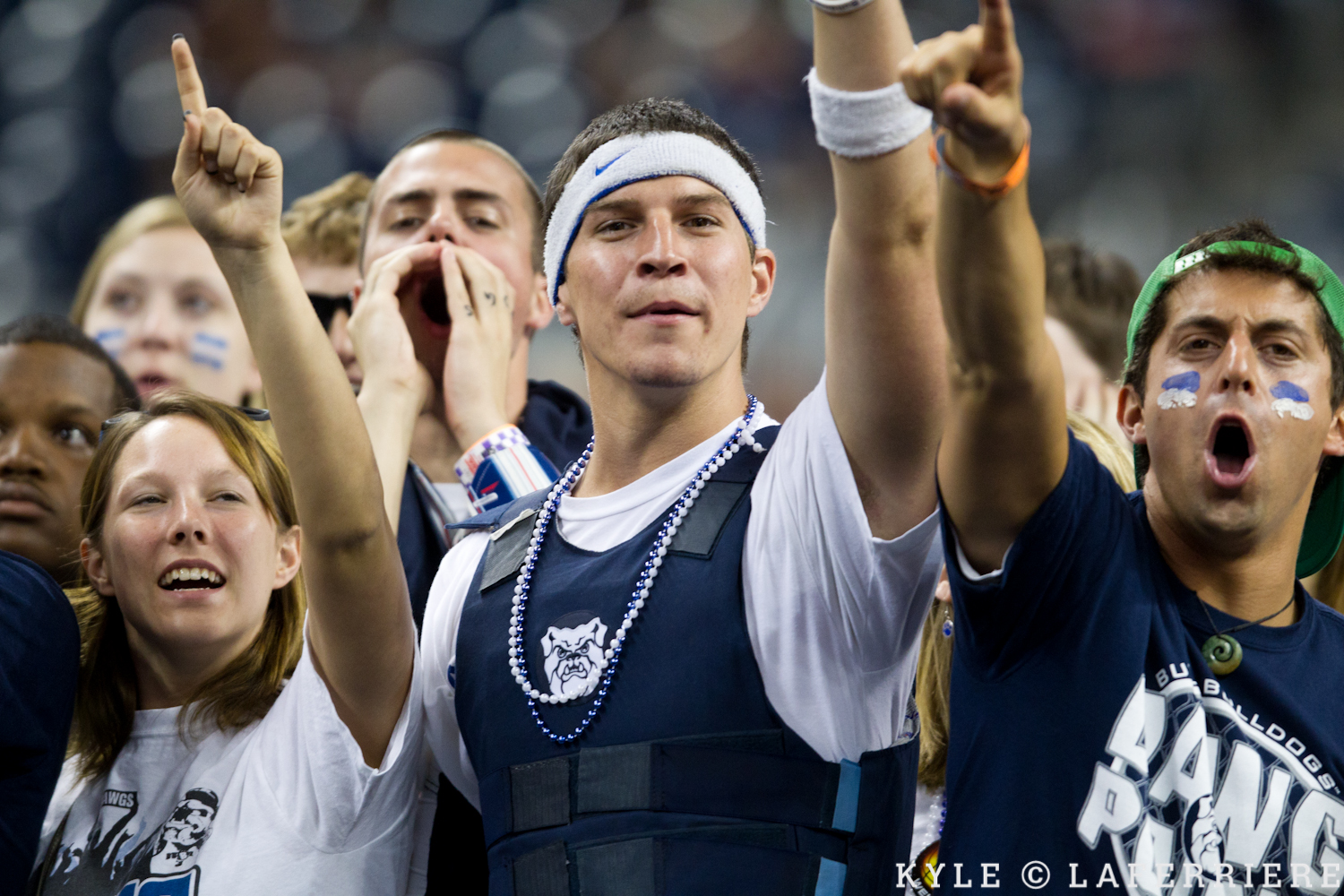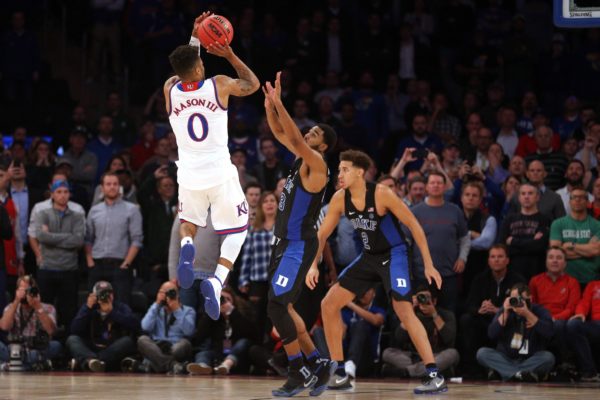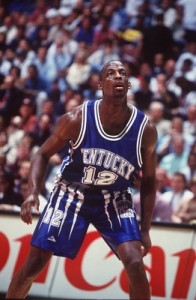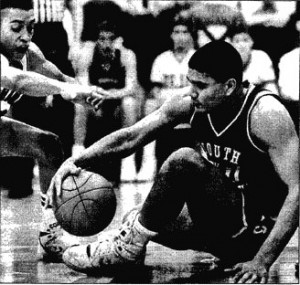Rush the Court contributor Joshua Lars Weill (@AgonicaBoss|Email) reports from Richmond, Va., at the Colonial Athletic Association conference championship.
Richmond Coliseum is not a pretty place. It’s old. The color of the inside can best be described as “concrete.” The rafters are dark and the seats darker. It boasts all the ambiance of an airplane hangar. Each year, at the Colonial Athletic Association conference tournament, the fans grumble about the decrepit surroundings and some columnist writes an article in the local paper talking about how old and lousy the Coliseum is.
And yet, somehow the inferior surroundings make the actual experience of watching the conference tournament there stand out all the more. Without the bells and whistles of a modern, NBA-style arena, you’re left with just the contrasting team colors and the fans that adorn them, the rival pep bands and a sort of pure college basketball that shines plenty all by itself.
This Sunday, the arena is buzzing. Old Dominion, two-time defending champion, is battling this season’s regular-season champion Drexel in the first semifinal. Drexel is the outlier, from far-off Philadelphia, while the other teams in the final four hail from the state of Virginia, including Virginia Commonwealth, which is less than two miles away. VCU will face George Mason in the second game, a rivalry that has already resulted in two hard-fought, borderline acrimonious meetings already this season.
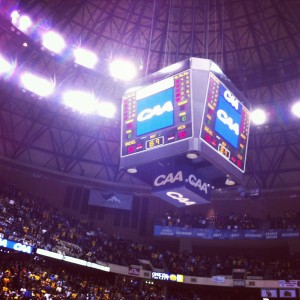
Richmond Coliseum has been the site of the CAA tourney every year since 1990.
The teams here are the best in the CAA, the top four seeds. But they’re also all fundamentally flawed. That’s no damnation, it’s just the way things are. It’s part of what makes college basketball – especially mid-major conference college hoops – irreplaceable, and unmatched in its own specific glory. The Monarchs of ODU feature a player sporting goggles held on with a Croakie and a guy with a knee brace who limps visibly. The players’ names on the Drexel uniforms are comically large, as if designed for AARP approval. VCU’s starting center plays only 15 minutes a game and hasn’t scored more than 10 points in a game all season. One of George Mason’s starting guards shoots under 20% from three. What’s not to love about all that imperfection? In an imperfect world, we can all appreciate some less-than-perfection.
Each of the last four teams sees this event as its only sure path to the NCAA tournament. Only Drexel and VCU offer possible at large candidacies, and neither is overwhelmingly strong. For Drexel’s coach, Bruiser Flint, an NCAA bid would bring some much-needed legitimacy to his program. Old Dominion has been there before.
The opening semifinal starts with lots of intensity and not many shots made. The Dragons manage an early lead. ODU’s bench uses flash cards to call its plays, thus assuring that the players have no answer to the coach’s inevitable question of, “Why the hell did you do that?!”
A fan in the lower bowl holds up a homemade sign, simple scribbled words on a half-still-rolled white poster board that reads, “ODU SUCKS!!”It’s unclear to whom the fan’s allegiances are to, though not who they are against, apparently.
Sucking or not, Old Dominion works its way back into the game methodically, tightening the defense on one end and earning extra scoring chances with offensive rebounds on the other. But the Old Dominion crowd, once boisterous, is subdued by the deficit and their team’s inability to get into any sort of offensive rhythm. At a timeout, Big Blue, ODU’s lion mascot, who inexplicably wears a T-shirt under a jersey, tries to raise the spirits of the Monarchs fans. He fails. Drexel’s Dragon mascot is more cartoonish and more entertaining, a look of forever confusion molded onto his face. But neither has the sheer oddity of the VCU ram, Rodney, which looks a great deal more like a dog with horns attached than a ram.
Drexel’s big men Daryl McCoy and Samme Givens are built in a typically mid-major fashion, beefy and strong but not tall and long as their counterparts at Kentucky or Kansas or North Carolina. They create space with muscle and hustle, not with genes. Givens yells at Damion Lee, his teammate, “SCREEN, DAMION!” as an ODU defender rushes to set a pick on his blind left side. Lee doesn’t turn or acknowledge Givens, but as the pick is set he glides just outside it, sensing the body near him.
Thirty-two minutes in Monarchs star forward Kent Bazemore finally gets going, snaring a rebound above the rim and finding a teammate for a basket and foul that cuts the lead to 10 points for the first time in what seems like ages. As the teams go to a scheduled timeout, Bazemore appeals to the suddenly awakened ODU crowd with grand waves of his long, spindly arms. Drexel, as it has all season, finds a way to match the run, breaking a trapping press three straight times for easy baskets. Bazemore’s response is woefully short, and he grimaces at his own airballed three as it bounces meekly out of bounds. Read the rest of this entry »
